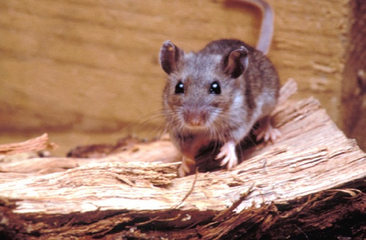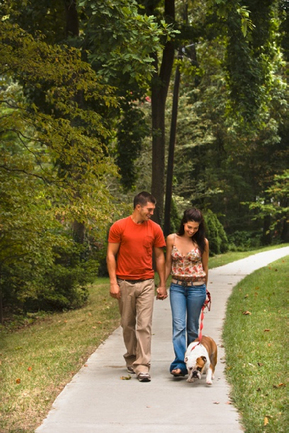6 The Built Environment and Indoor Air Quality
Key Points for Clinicians and Public Health Professionals
Public Health Professionals
Human Health Clinicians
Veterinary Clinicians
BUILT ENVIRONMENTS AND ACTIVE LIVING
On a large scale, habitat destruction affects species diversity; this results in loss of access to traditional medicines and novel pharmaceuticals as well as infectious disease emergence and spread.3–5 Recent years have seen increasing realization that the design of neighborhoods and community environments has a profound impact on human health.6 Moreover, issues such as traffic safety and injury risk, communities that sprawl (i.e., single-use development with design around the automobile), obesity,7 and lack of exercise opportunities leading to inactivity have all been cited as important public health threats. These threats can eventually manifest as clinical problems, including diabetes, asthma, hypertension, and stress-related illness.8,9 Societal reductions of physical activity contributing to these poor health outcomes have been linked with designing our communities around motorized transportation and failing to design communities to promote neighborhood interaction. Active living is defined as participating in at least 30 minutes of physical activity on most days.10 Research indicates that environmental factors, including accessibility (e.g., safe pedestrian and bike paths, parks, stores, churches, schools, libraries, and so on within safe walking distance), opportunities (e.g., sidewalks, a walkable neighborhood environment), and aesthetic attributes (e.g., tree-lined pedestrian paths, free of litter, with enjoyable scenery; Figure 6-1) all have a significant effect on the likelihood of engaging in physical activity,11–13 “aging in place,”*,14 and community resiliency.15

Figure 6-1 Tree-lined, designated pedestrian paths increase the likelihood of walking.
(From Centers for Disease Control and Prevention: Healthy community design. http://www.cdc.gov/healthyplaces/docs/Healthy%20Community%20Design.pdf.)
Less well considered is that companion animals and wildlife are also affected by changes in the built environment and, in turn, may contribute to human health issues. Human health care providers may not be aware that pet obesity is an increasing problem, presumably due to factors similar to those driving the rise in obesity prevalence in human beings, including lack of exercise related in part to neighborhood design and their owners’ sedentary habits. The interactions between built environments with nearby wildlife areas can affect the risk of zoonotic disease transmission among wildlife, domestic animal, and human populations (Figure 6-2).
CLINICAL CONDITIONS IN HUMAN BEINGS AND OTHER ANIMALS RELATED TO BUILT ENVIRONMENTS
Table 6-1 lists conditions in human beings and other animals that could be related to problems with built environments and that should make clinicians consider this possibility. Similar clinical conditions can arise in both human beings and companion animals.
Table 6-1 Health Hazards and Clinical Conditions Related to the Built Environment
| Health Hazard Associated With Built Environment | Sentinel Health Event in Human or Companion Animal | Mitigation |
|---|---|---|
| Lack of safe pedestrian areas | Pedestrian, bicyclist, or animal injured by motorist | Provide safe walking paths for people and pets (Figure 6-3); (re)design communities for pedestrians rather than automobiles, mixed-use and higher-density zoning and design (for sprawl); protection and creation of green spaces |
| Lack of exercise areas and opportunities | Obesity and chronic disease16,17 | |
| Lack of green space or other aesthetic attributes | Reduction in physical activity11,18 | |
| Suburban encroachment on wildlife habitat | Tick-borne disease (such as Lyme disease or Rocky Mountain spotted fever) | Management of open space and wildlife habitat near housing, integrated pest management techniques |
| Rodent infestation in and around buildings | Rodent-associated illness (such as hantavirus) | |
| Inadequate policies on pet sanitation in playgrounds and public areas | Hookworm disease, toxoplasmosis | Policies addressing pets in public areas (e.g., picking up after pets to keep areas free of feces) |
BUILDING HEALTHY COMMUNITIES
Public health and health care involvement in community design is critical to addressing and improving population health. Activity-promoting environments are those with pedestrian-centric design and aesthetic appeal, and are joined with historic core public health issues such as water, soil, and air quality concerns.19 Urban designers and planners, with their roots in public health protection, can be advocates in concert with public health professionals and clinicians to alter zoning codes to encourage working, shopping, and attending school within neighborhoods and to provide green space with its attendant violence prevention and mental health improvements.20 Veterinarians, wildlife biologists, and other animal health professionals can play key roles in this effort by working with planners, land use experts, and developers to help design and build environments that encourage healthy pet ownership, including adequate sidewalks and paths for pet walking (Figure 6-3), parks that encourage pet sanitation, and approaches to limit forest fragmentation and problems such as peridomestic rodent infestation and disease vector abundance. Specific guidelines for reducing rodent infestation and tick control are found in Chapter 9.
INDOOR ENVIRONMENTS
Americans spend the majority of each day indoors21 both at home and at work, and the indoor environment is becoming recognized as an important factor in respiratory, allergic, and other health issues.22,23 Many companion animals are kept indoors because of lifestyle (apartment living), to avoid injury (from automobiles or other animals), or to minimize contact with zoonotic disease threats from wildlife and arthropod vectors (as recommended in some sections of this book). As a result of these changes in the Western lifestyle, human beings and other animals share indoor environments to a significant extent and are exposed to many similar indoor air health hazards. These hazards include chemicals from cleaning, renovation, pesticides, personal care products, and even cooking; allergens; and infectious pathogens (Table 6-2). Specific infectious diseases are discussed in Chapter 9, and the shared exposures of animals and human beings to specific toxic chemicals are described in Chapter 8. In most living areas, the total loading of chemicals is not high compared with an industrial environment, but low levels of chemicals without good ventilation have an effect on health. In addition, as described in Chapter 7, animals and people are exposed to each other’s allergens. Animal dander has been linked to an increasing prevalence of asthma and other allergic conditions in human beings in developed countries.24 In a similar manner, human dander has been associated with feline asthma25 and canine eosinophilic bronchopneumopathy.26
Table 6-2 Common Contaminants in Indoor Air
| Class of Hazard | Hazard Sources |
|---|---|
| Volatile organic compounds (formaldehyde and others) | Plywoods, particle board; new vinyl flooring, rubber-backed nylon carpeting; adhesives, paints, resins, solvents; printed materials, printer and photocopier emissions; cleaning chemicals, personal products, fragrances, pesticides, cooking fumes |
Stay updated, free articles. Join our Telegram channel
Full access? Get Clinical Tree
 Get Clinical Tree app for offline access
Get Clinical Tree app for offline access

|

